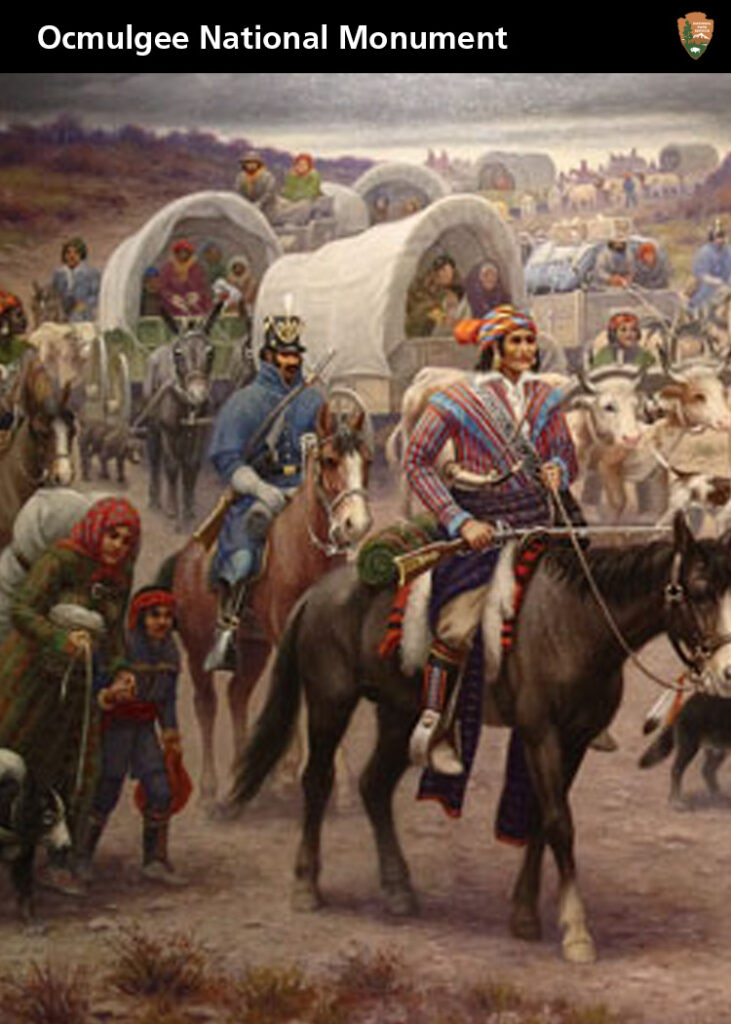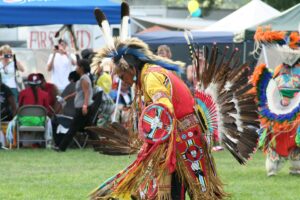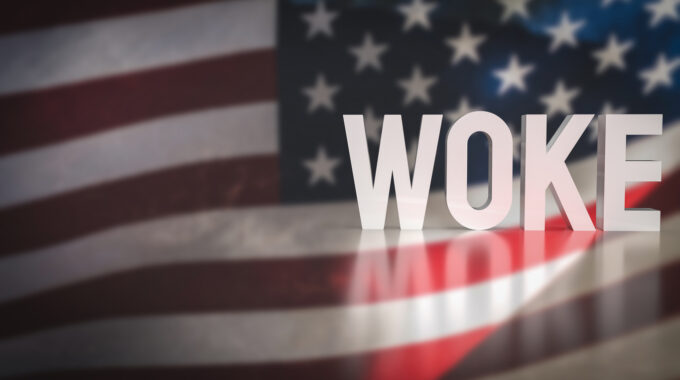For skeptics, the question isn’t “Why should we prioritize DEI?” but rather, “Can we afford not to?” In today’s competitive business landscape, inclusion is no longer optional; it’s essential for success.

Bias Against Native Americans
Thinking About Thanksgiving
 As many U.S. residents prepare for Thanksgiving gatherings, those of us who are immigrants, descendants of immigrants or descendants of slaves, may also think about what the holiday represents to those who were here prior to colonization.
As many U.S. residents prepare for Thanksgiving gatherings, those of us who are immigrants, descendants of immigrants or descendants of slaves, may also think about what the holiday represents to those who were here prior to colonization.
Systemic racism impacts not only people who are Black, but bias against Native Americans and other races and ethnicities is also widespread. Indigenous Peoples’ Day replacing Columbus Day is not the only “fix” that is needed.
Native American History in the U.S.
Indigenous people of the U.S. have experienced brutalities at the hands of colonizers since the first European settlers arrived. In a genocide of their people, Native Americans were being killed, raped, and enslaved by these settlers; some scholars estimate that the first Spanish settlers were responsible for the deaths of 12 to 15 million of Indigenous people.[i] Throughout the 18th, 19th, and 20th centuries, bias against Native Americans resulted in several massacres which took the lives of even more Native Americans, with no reparations made to the Native people.
 When Andrew Jackson was president, he supported the Indian Removal Bill of 1830 that forcibly removed 60,000 Native Americans out of their lands in the Southeast in what is known as the Trail of Tears. The U.S. Army’s 7th Calvary massacred an estimated 150 Sioux Ghost Dancers at the Battle of Wounded knee in December of 1890 following the murder of Sioux Chief Sitting Bull. Over half of the Natives killed were women and children[ii]
When Andrew Jackson was president, he supported the Indian Removal Bill of 1830 that forcibly removed 60,000 Native Americans out of their lands in the Southeast in what is known as the Trail of Tears. The U.S. Army’s 7th Calvary massacred an estimated 150 Sioux Ghost Dancers at the Battle of Wounded knee in December of 1890 following the murder of Sioux Chief Sitting Bull. Over half of the Natives killed were women and children[ii]
These are only a few of the atrocities committed against Native Americans in the nation’s history. Due to historical oppression and decimation of their population, Indigenous people today are facing bias against Native Americans resulting long-term, systemic barriers in numerous facets of life. For instance, the median household income of Native American households is 44% lower than that of the U.S. as a whole.[iii]
This history has caused generational trauma in Indigenous communities and can impact employees in profound ways, shaping their interactions, engagement, and overall well-being within the workplace. The lasting effects of colonization, forced assimilation, and systemic discrimination have not only disrupted traditional ways of life but have also led to deep psychological and emotional scars passed down through generations.
How does this impact workplaces today?
In the workplace, this can manifest as heightened stress responses, challenges in trust-building, and a potential disconnect with corporate cultures that do not recognize or accommodate the unique experiences of Indigenous employees. Understanding and addressing this generational trauma is crucial for creating an inclusive, supportive work environment that empowers all employees to thrive.
For employers, it is crucial to recruit and retain Native Americans while fostering a working environment that is respectful of their diverse cultures. Here are five things your organization can do to attract and maintain Native American talent by fostering an inclusive workplace setting.
Work with Tribal Employment Rights Organizations (TEROs) and Seek Subject Matter Experts

Working with Tribal Employment Rights Office (TERO) organizations offers workplaces a valuable pathway to enhance inclusion and uphold the employment rights of Indigenous communities..[iv]
By ensuring compliance with TERO regulations and engaging in consultation, businesses can integrate tribal employment laws into their hiring practices, fostering a workplace that respects Indigenous rights. Collaborations for cultural competency training can further enrich the workplace environment, promoting understanding and respect for Indigenous cultures and histories, including the impacts of generational trauma.
Start Native American Employee Resource Groups (ERGs) or Employee Networks
ERGs operate as inviting spaces for individuals who belong to a particular affinity group and their allies to socialize, learn about cultures and subcultures, and celebrate their heritage. Many organizations already have robust and thriving Native-focused Employee Networks. For instance, The Intertribal Council of AT&T Employees (ICAE) provides opportunities for cultural development, career advice, and understanding all employees, specifically Native Americans.[v] General Motors’s Native American Cultural Network (NACN), “Seeks to educate, inform and create a greater awareness among our employees, customers and the public about Native American Indian culture, beliefs and values.”[vi]
Within this supportive framework, it’s crucial to emphasize that while these groups play a pivotal role in cultural education and fostering an inclusive environment, the responsibility for educating colleagues about Native American cultures, histories, or experiences should not fall solely on Native employees. Instead, organizations should proactively provide comprehensive cultural competence training and resources to all employees, ensuring that the educational burden does not rest on the shoulders of Indigenous staff. By doing so, workplaces can cultivate an environment of mutual respect and learning, where the contributions of Native-focused ERGs are celebrated and supported without placing undue pressure on individual employees to serve as cultural ambassadors. This approach ensures that education on diversity and inclusion is seen as a collective responsibility, enhancing the overall inclusivity and sensitivity of the workplace culture.
Coordinate with Tribal Vocational Rehabilitation Agencies
These programs exist to assist tribal governments to develop or increase vocational rehabilitation (VR) services to Native Americans with disabilities. Many tribes utilize VR agencies to assist their members with disabilities in finding, securing, and retaining gainful employment. These organizations help greatly with matching an individual’s skills to specific jobs.[vii]
Joint job fairs and recruitment initiatives can amplify job visibility within Indigenous communities, while apprenticeship and training programs, developed in partnership with TEROs, prepare Indigenous employees for skilled positions, nurturing career development.
Support Indigenous-owned Businesses
Support for Indigenous-owned businesses through partnerships, subcontracting, or procurement practices not only bolsters the local Indigenous economy but also cements a workplace’s commitment to inclusive economic practices. Establishing feedback mechanisms with TEROs ensures the continuous refinement of inclusion practices and policies, making the collaboration a cornerstone for creating equitable employment opportunities and a more inclusive workplace culture that acknowledges and values the contributions of Indigenous people to the community and beyond.
Foster a More Culturally Sensitive Work Environment for Native Americans
To foster a more culturally sensitive work environment, especially for Native employees, businesses can implement several respectful practices.
Recognize Indigenous Peoples’ Day
Recognizing Columbus Day as Indigenous Peoples’ Day shifts the focus from celebrating colonial conquest to honoring the rich history and culture of Native peoples.
Remove Owl Decorations
Steven Harjo, the creator of the hit series Reservation Dogs explains, “In the case of the owl, for a lot of Native people, it can mean a bad omen, or death, a messenger of death.” Removing owl decorations can prevent cultural insensitivity.
Steer Clear of Native Caricatures
Steering clear of displaying Native caricatures during the Thanksgiving season helps avoid perpetuating harmful stereotypes and respects the complex history between Indigenous peoples and European settlers.
Understand and Eliminate Microaggressions in the Workplace
Microaggressions are subtle, often unintentional behaviors, actions, and expressions that convey hostile, derogatory, or negative messages to target individuals in marginalized groups, including Indigenous peoples.
Microaggressions against Indigenous peoples can manifest in various forms, including micro-insults, micro-assaults, and micro-invalidations, each carrying implications for the individuals who experience them. For example, micro-insults might include behaviors or comments that subtly insult Indigenous people, such as mispronouncing Indigenous names or expressing surprise at an Indigenous person’s achievements. These actions, while perhaps not intended to be harmful, contribute to a broader pattern of marginalization and racism.
The casual use of Native words in business settings, such as referring to meetings as “pow wows” or settling disagreements as “burying the hatchet,” are examples of common microaggressions. These terms trivialize and appropriate sacred practices and expressions, contributing to the perpetuation of stereotypes and undermining the cultural significance and historical experiences of Indigenous communities.
By acknowledging the impact of microaggressions and taking steps to eliminate them, workplaces can become more welcoming and supportive spaces for Indigenous employees and all members of marginalized communities.
Land Acknowledgement Statements
Incorporating land acknowledgment statements into corporate communications, websites, or at the beginning of events can demonstrate respect and recognition of the historical and ongoing connections between Indigenous peoples and their lands. Such acknowledgments should be made with intention, researching and reflecting on the history of the land, and committing to actions that support Indigenous communities.
However, as emphasized by the Native Governance Center, merely crafting a well-worded acknowledgment isn’t enough; it should be accompanied by a commitment to supporting Indigenous communities through tangible actions.
Native American-specific Bias Training
Native American-specific sensitivity or bias training within workplaces can help you foster a positive, inclusive culture. Such training should go beyond mere surface-level understanding, delving into the historical context of Native American experiences, including colonization, forced removal, and residential schools, to provide a comprehensive backdrop for current societal dynamics. It’s essential to include information on tribal sovereignty and the legal and political status of Native American tribes as distinct political entities.
The training should also cover cultural appreciation versus appropriation, helping employees understand the fine line between respecting and misappropriating Native cultures, symbols, and practices. Incorporating the voices and perspectives of Native American people through guest speakers, collaboration with Native-led organizations, or curated resources can lend authenticity and depth to the training. This approach not only educates non-Native employees about the complexities of Native American history and culture but also affirms the identity and experiences of Native employees, contributing to a workplace where everyone feels valued and respected.
Measure Bias in Your Workplace With the Spectra Diversity Inclusion Assessment
Ensure that Native American representation is present and prioritized in your organization by beginning with a Diversity and Inclusion Assessment. You can measure beliefs and interpersonal skills as well as employee opinions regarding your Management and Organizational Culture using the Spectra Diversity Inclusion Assessment.
While your organization may dive into the racial and ethnic breakdowns of historically marginalized groups within the employee population, Native Americans are often overlooked because they represent only about 2% of the U.S. population.[viii] The Spectra Diversity Inclusion Assessment can help you focus on all groups, ensuring none are overlooked with our unique enhanced reporting options.
Sources
[i] “Here are the indigenous people Christopher Columbus and his men could not annihilate” Gillian Brockell, Washington Post, 2019
[ii] “Wounded Knee” History.com, 2019
[iii] “Profile: American Indian/Alaska Native” US Department of Health and Human Services, 2022
[iv] “Council for Tribal Employment Rights: TERO FAQ”, Council for Tribal Employment Rights
[v] “Employee Groups”, AT&T, 2020
[vi] “Diversity & Inclusion”, General Motors, 2020
[vii] “Vocational Rehabilitation Services Projects for American Indians with Disabilities”, Benefits.gov
[viii] “Native American Population 2020”, World Population Review, 2020




